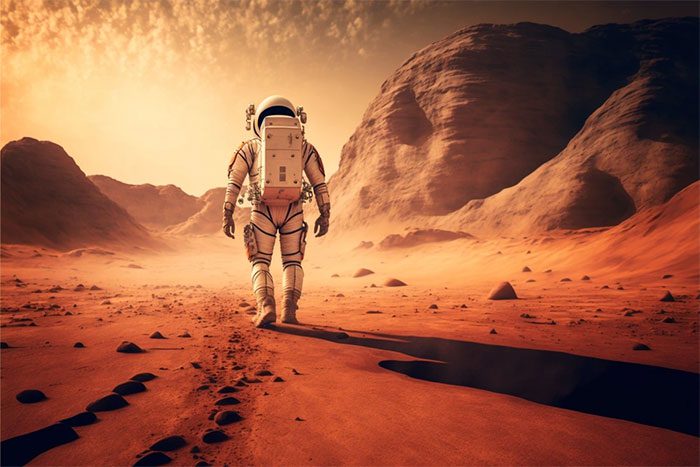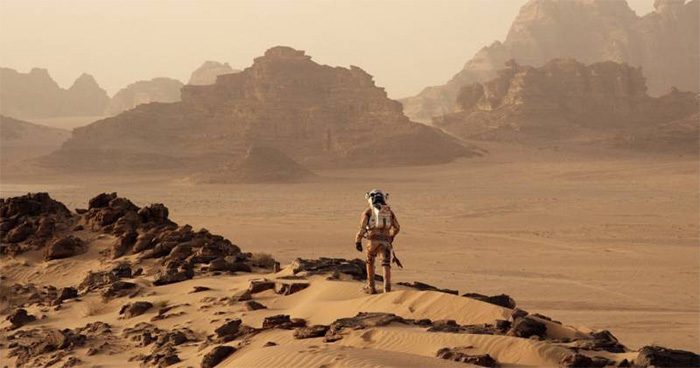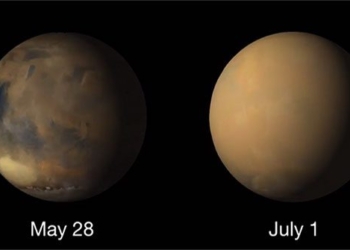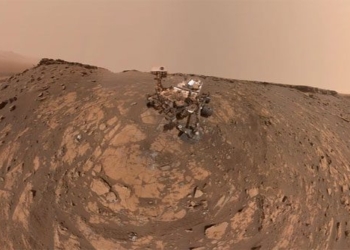Humans Can Walk Around the Earth. But How Long Would It Take to Walk Around Mars?
Mars has long been a bold ambition for humanity. NASA has plans to send astronauts to the Red Planet within the next few decades. Thus, the prospect of humans being able to set foot on, and even walk around Mars, is merely a matter of time.

The Red Planet has extremely rugged terrain, featuring valleys, craters, and many unique geological characteristics that are hard to predict. These will pose challenges for astronauts on their journey. (Photo: Getty).
Professor Erdal Yigit, an expert in physics and astronomy at George Mason University, explains: “To discuss walking around Mars, we need to consider two parameters: the speed and the distance the astronaut must cover.”
It is estimated that if a person walks along the equator of Mars, they will walk approximately 21,400 km to complete a full circle around the planet. Meanwhile, walking around the poles of Mars would only take about 160 km. However, according to Professor Yigit, the extreme cold here presents a significant challenge.
Regarding speed, an individual can average around 5 km/h, which is also the average walking speed on Earth along the equator.
This figure is attributed to the fact that although Mars’ gravitational pull is about 40% less than that of Earth, we will need to wear a bulky spacesuit and carry many essential supplies like oxygen, water, and food…
Thus, if someone were to walk continuously around Mars at the stated speed, the calculation is straightforward: simply divide the distance by the speed. That totals approximately 4,290 hours.
On average, a day on Mars lasts about 24.7 hours (known as a sol), so it would take about 174 sols to walk continuously around Mars. This is roughly equivalent to 1/4 of a Martian year, or 668.6 sols.

It would take 668.6 sols to walk around Mars. However, this calculation does not account for additional factors. (Photo: Internet).
Of course, no one could complete that journey continuously, whether on Mars, Earth, or anywhere else.
Even if a person could carry enough oxygen, water, food, etc., and manage to eat while walking, they would still need to stop to rest and sleep.
Assuming an astronaut sleeps about 8 hours each night, the journey would be extended by approximately 56 sols.
If a person takes 4 to 5 hours each sol to eat, rest, change clothes, shower, organize, and clean up the campsite, it would add another 30 to 35 sols, depending on how long they stop.
Based on these parameters, a more realistic estimate for the journey around Mars is about 265 sols, which is roughly 40% of a Martian year.
Nonetheless, this calculation does not take into account potential obstacles, such as rugged terrain. Mars has many mountains, some of which are taller than any mountains on Earth.
Moreover, the Red Planet features extremely rugged terrain, including valleys, craters, and various unique geological characteristics that are difficult to predict.
Although this would be an extremely challenging journey, according to Professor Yigit, sending humans to Mars instead of robotic explorers is essential.
This is because we have the capability to navigate and find solutions in case of emergencies. This will be a critical factor, if not a prerequisite, in the exploration of Mars, as well as other planets in the Solar System.





















































